On my recent trip to Turkey I was amazed to find Turkish words and verb tenses bubbling up from the nether reaches of my brain. Turkish is a difficult language, but it makes up for that by being a kind one. Some of its daily niceties warm my heart:
When you see someone working, you say “Kolay gelsin.” as you pass. “May it come easy to you.” I know of no similar sentiment in English,
Or how about when the young woman you met recently is sick to her stomach? The Turkish kindness for difficult situations is “Geçmiş Olsun.” “May you leave it behind you.” Isn’t that sweet?
When someone sets a meal before you, Turks say “Afiyet Olsun.” “May this nourish you.” Then you respond with “Elinez Sağlic.” “Health to your hands.”
The list goes on, but enough of that. I want to explain Turkish baths.
Our second city on this tour was the mountaintop village of Şirince.
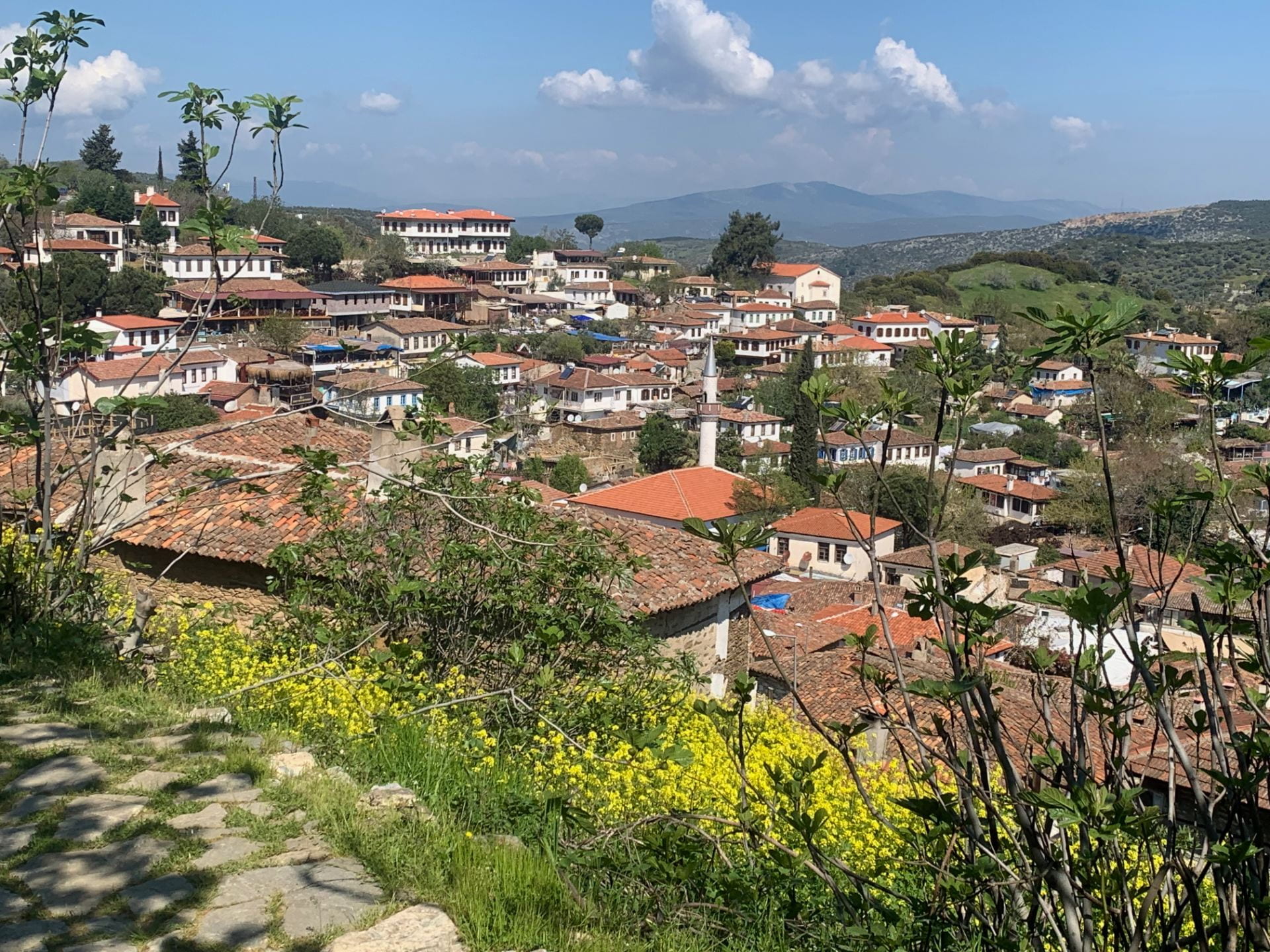
When I visited fifteen years ago, typical village transport was donkeys, but many of the narrow streets have been upgraded from various-sized rocks to large, flat ones for cars. Disappointing, but what can you do? Progress. Most of the streets are barely wide enough for a small car. Thankfully, the little shops have retained their small-village charm, from fruit wine vendors to jewelry and craft stores. On every street we encountered women in şhalvar (skirt-like pantaloons) selling herbs, baked goods, and crafts.
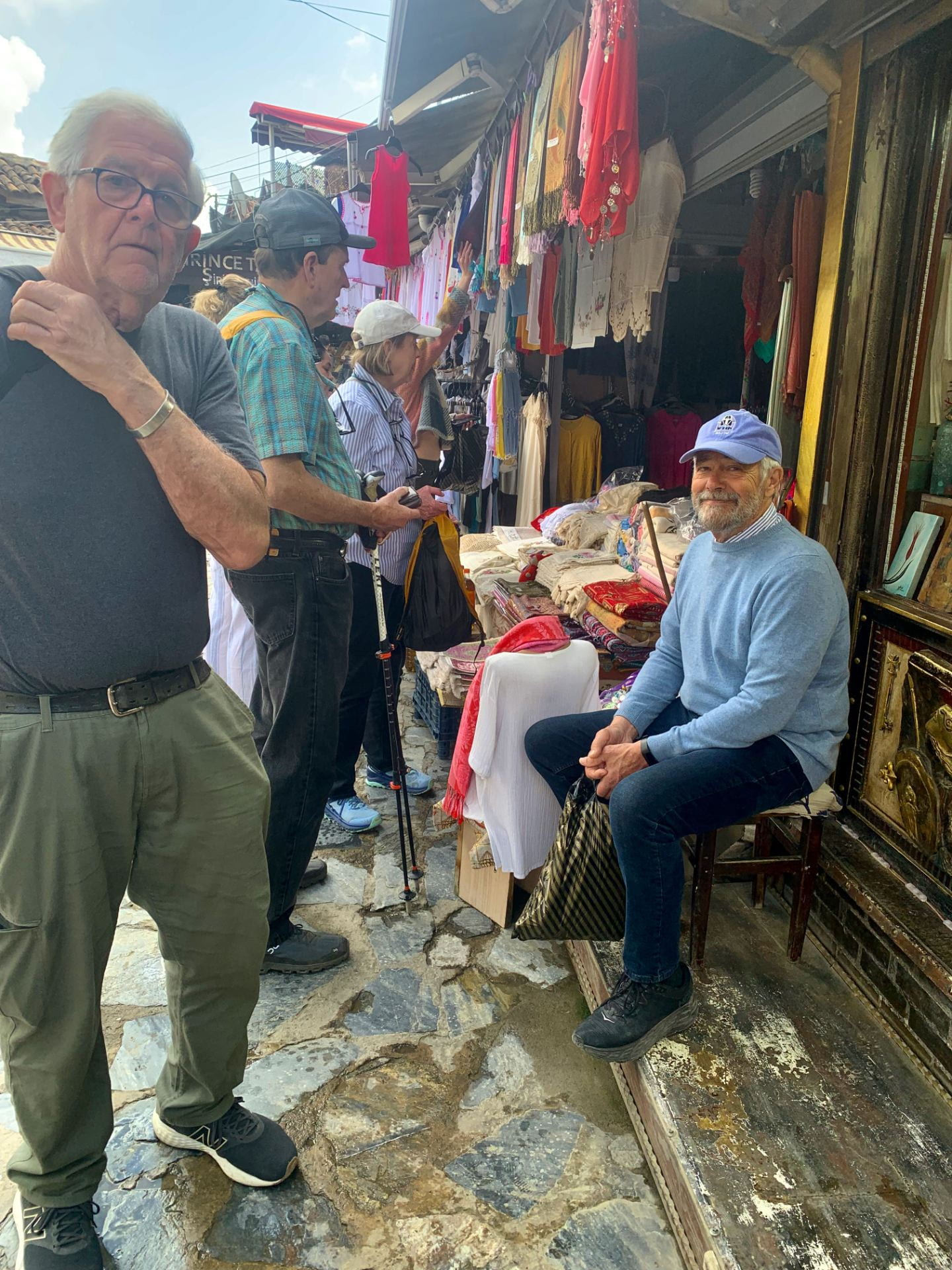
Our hotel, the Nişanyan, was perched at the top of the village, something of a botanical garden dotted with cottages and ancient Ottoman houses. We stayed in a 500-year-old whitewashed stone cottage with foot-thick walls. It had a sitting room that featured a low cushioned bench festooned with colorful embroidered pillows, a carved stone fireplace, and a single platform bed. Both that and our bedroom/sitting room had small cupboard niches with carved wooden doors, Turkish carpets, and charming wall decorations.

Our bathroom was a traditional hamam (Turkish bath)—a wonder. It was a large marble room with a domed ceiling emitting light through round glass “eyes.” Two windows were set into the rounded back wall. A low marble basin with a faucet sat on the far end, beside it a low stool with a metal bowl for scooping water from the basin. That’s how hamams are everywhere—you sit on a stool or bench, then repeatedly scoop hot water and pour it over yourself. A drain across the entire floor transports it to the sewer.
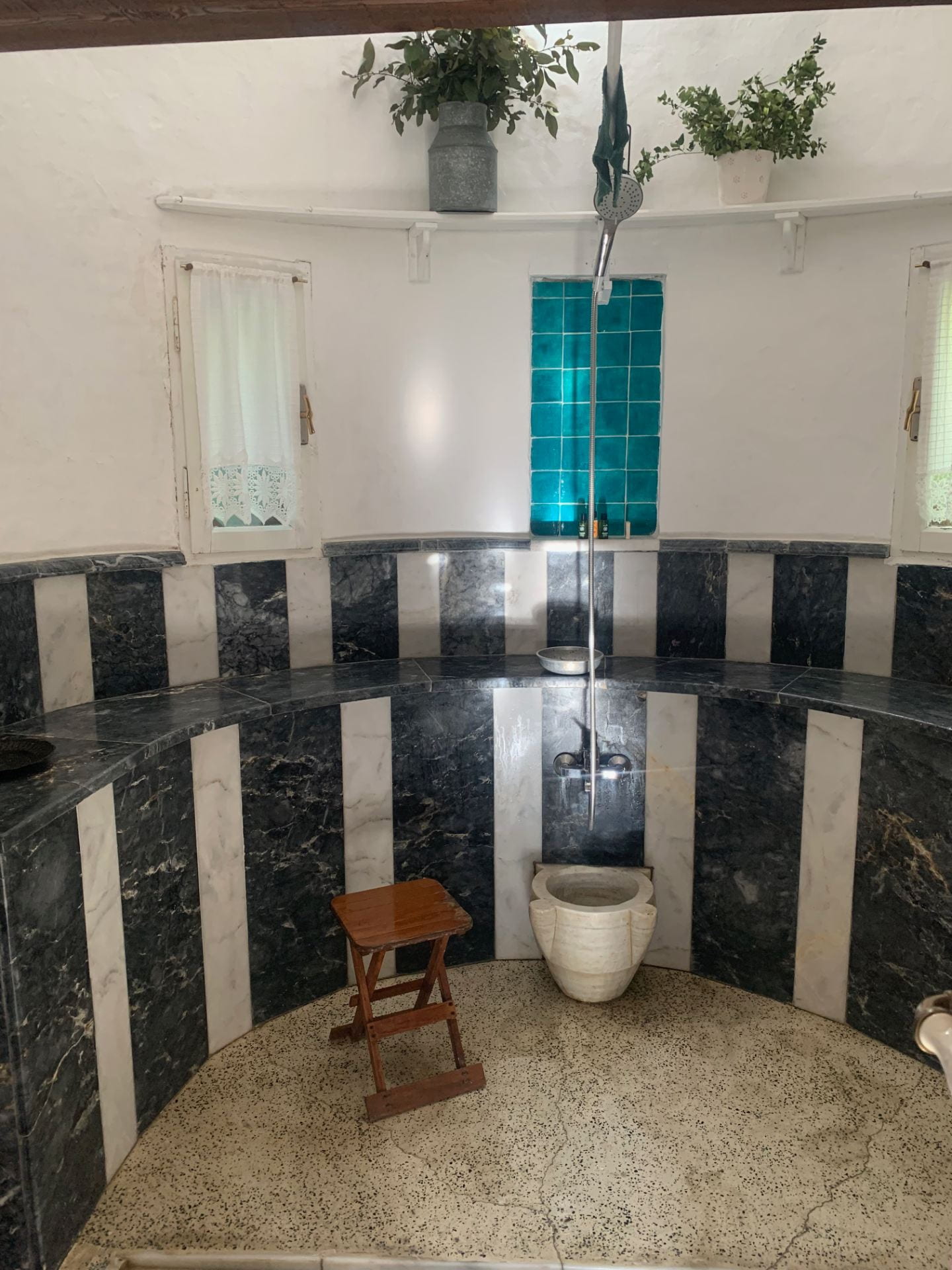

We visited a community hamam in Ürgüp, Cappadocia. We were first ushered into locker rooms to undress and don slippers and peştemal (PESH-ta-mal), plaid cotton towels. Women wore two (one on top and one on the bottom), while the men only got one. The six of us were then ushered into a steam room with marble benches and a marble sink. We took turns pouring hot water over each other, soaking ourselves through.
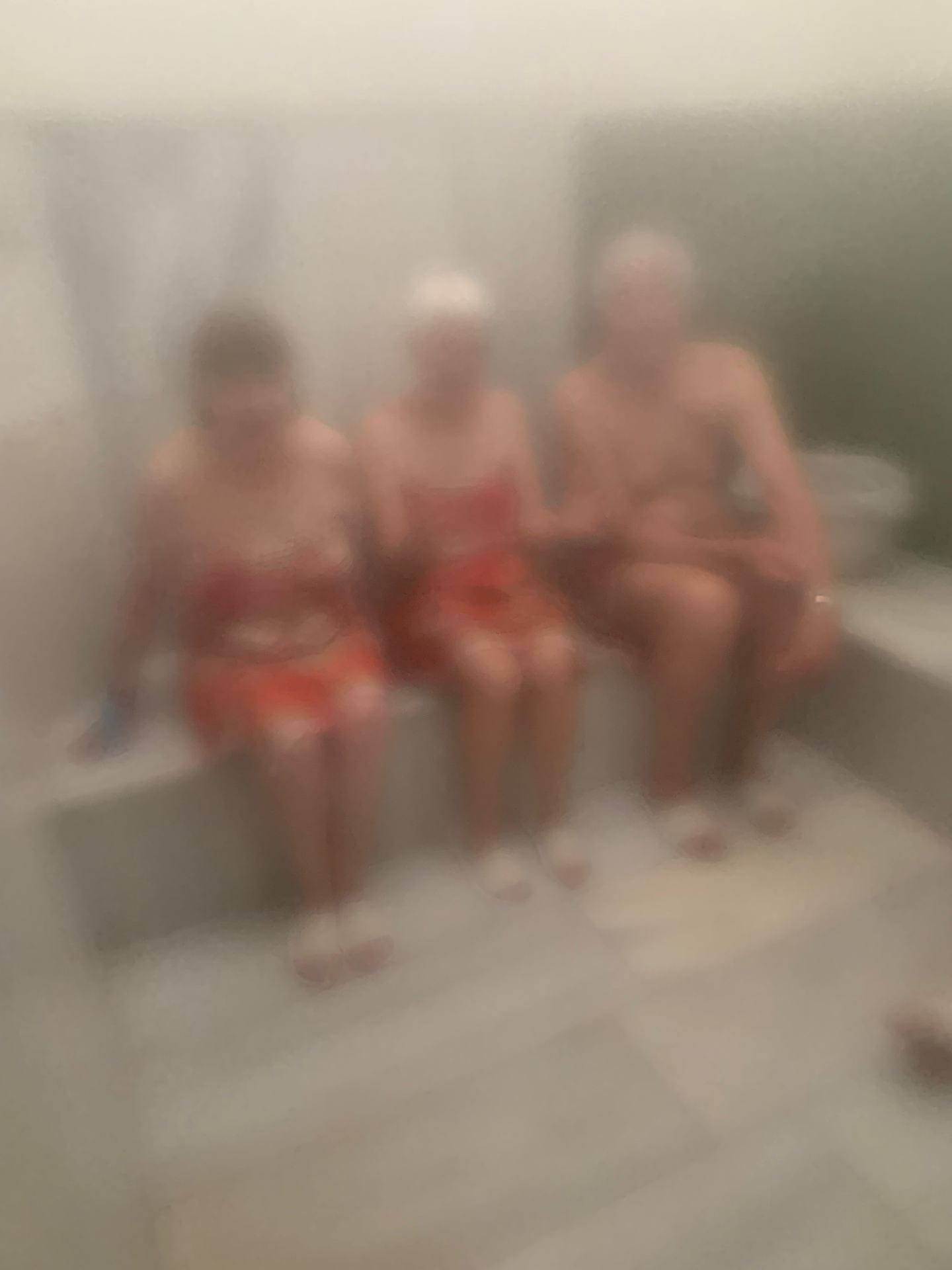
Twenty minutes later the masseuses (women draped in peştemal) brought us out into the main part of the hamam, where a massive heated marble slab dominated the room.
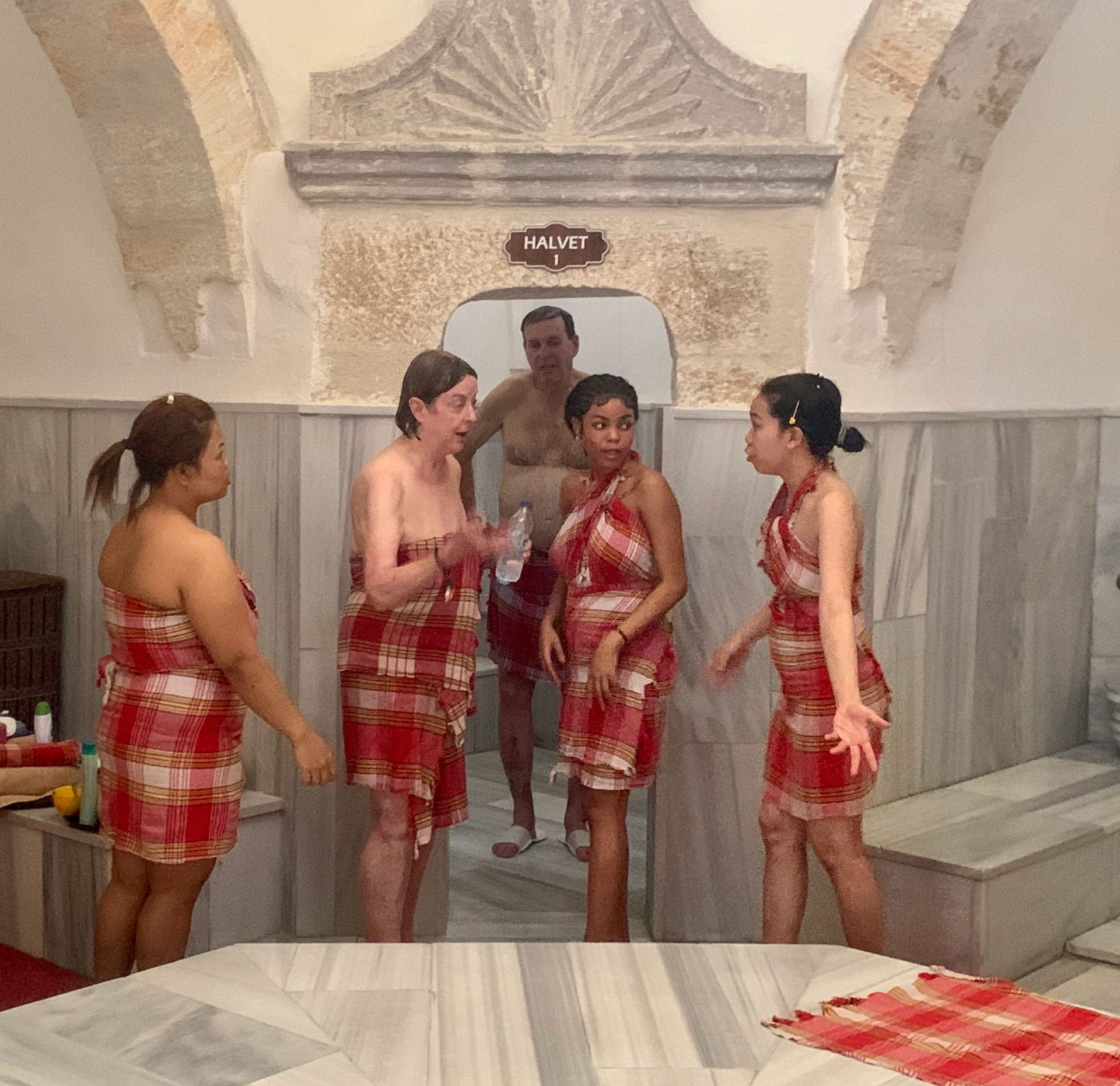
There were side rooms, too, each with its own high marble bench (heated) and marble sinks. My masseuse poured warm water over me, then scrubbed every inch of skin with a textured mitten-like scrubber. It felt a little like sandpaper, only nicer. After that, more hot water and a seaweed facial mask.
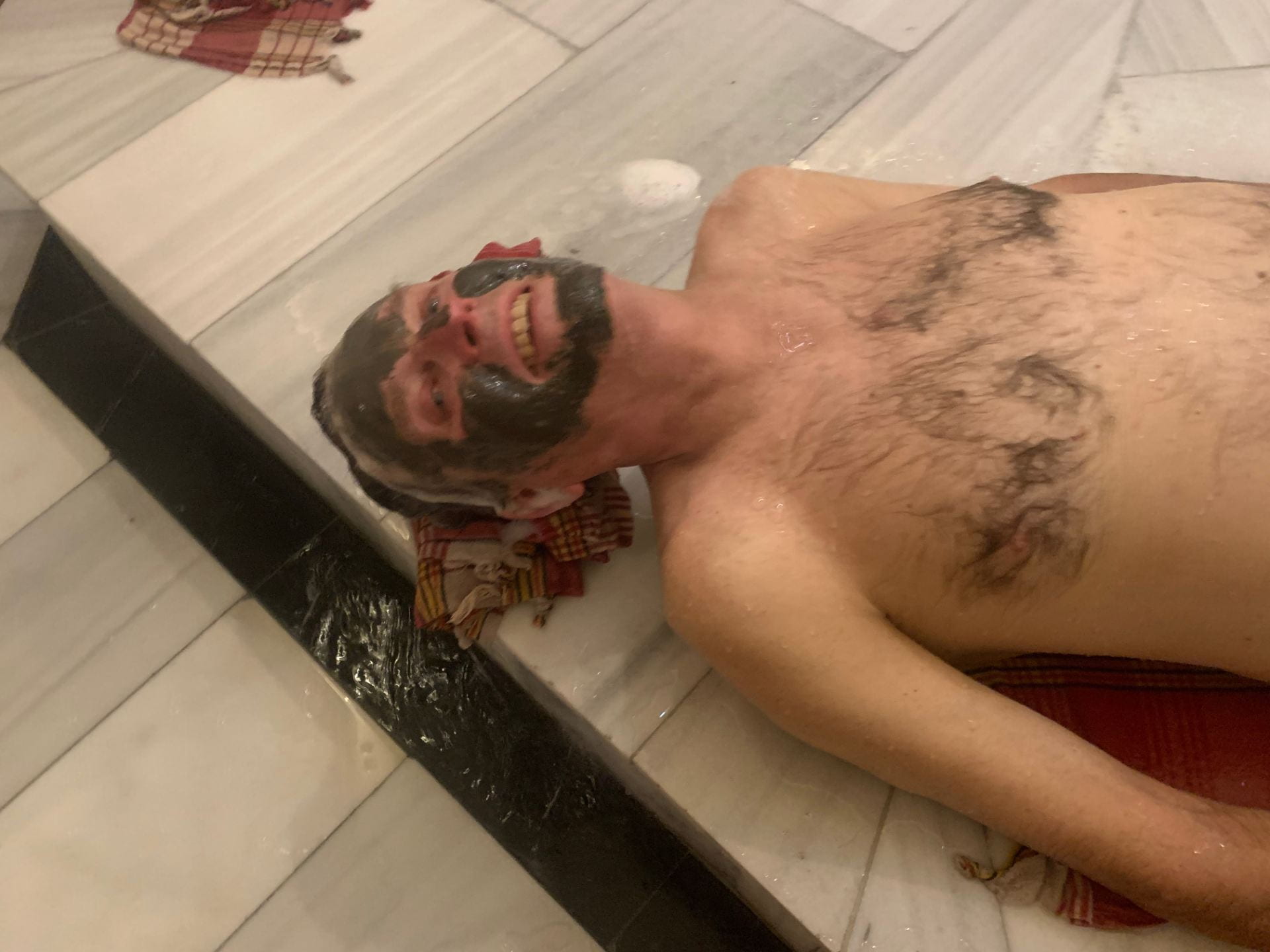

Then the soap suds. Oh, the soap suds. She took a long, net bag and soaked it in a tub of soapy water. Then she swung it back and forth a few times before squeezing suds over me, coating my body with what felt like a warm blanket. She repeated this a few more times until I was completely covered.
Link to a video of the soapsuds technique–amazing!
Rather than oil, the suds from olive oil soap provide a slippery surface for massage. And what a massage it was! By the time she’d finished, I was a noodle. She helped me sit up and poured bowl after bowl of hot water over me.
The Turkish Hamam is a unique, relaxing experience. Once dried and dressed, we were offered tea or water (Turks frown on drinking cold water, but we insisted) as we relaxed on cushions in an outer room. Wet noodles all.
